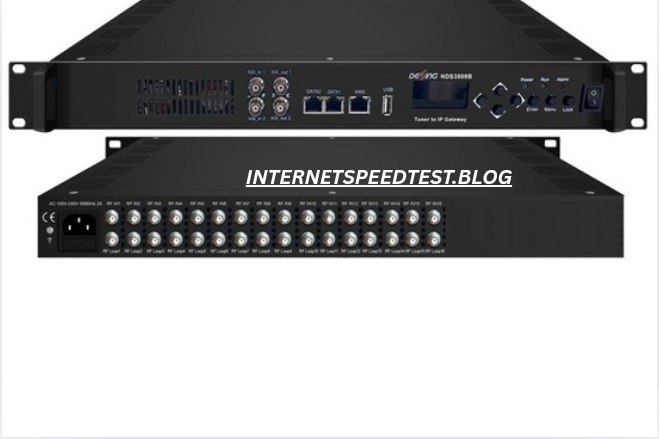Introduction
Technology is constantly evolving, and the television industry is no exception. From black-and-white broadcasting to HD, from cable to streaming, every advancement changes how people consume content. In recent years, a new term has gained attention in the digital world: DTV5. This concept represents a significant shift in digital broadcasting, combining the strengths of modern streaming platforms, satellite television, and fifth-generation technology. But what exactly is DTV5, and why is it considered a game-changer?
In this article, we will explore the meaning, features, advantages, and potential of DTV5 in reshaping digital entertainment worldwide.
What is DTV5?
At its core, DTV5 refers to an advanced digital television model that integrates 5th-generation digital broadcasting standards with high-speed network capabilities. Unlike traditional TV systems, which rely solely on satellite or cable, DTV5 combines over-the-air signals, internet protocols, and 5G connectivity.
This hybrid technology ensures viewers enjoy seamless access to high-quality television content, whether they are using a smart TV, a mobile phone, or even a vehicle infotainment system.
In simple terms, DTV5 is the next evolution of digital TV that merges broadcasting with the internet.
Key Features of DTV5
The success of DTV5 lies in its advanced features that make it superior to older broadcasting systems. Let’s look at some of its defining characteristics:
1. Ultra-High Definition (UHD) Quality
DTV5 supports 4K and even 8K resolution, delivering crystal-clear images that rival cinema experiences. Unlike standard streaming, it uses optimized compression techniques to reduce buffering.
2. Hybrid Connectivity
Unlike traditional digital TV, which depends on cable or satellite, DTV5 integrates 5G networks and Wi-Fi protocols. This hybrid model ensures uninterrupted service even in remote areas.
3. Multi-Platform Accessibility
Whether you are on a smartphone, tablet, smart TV, or VR headset, DTV5 provides consistent streaming quality.
4. Interactive Services
DTV5 is not just about passive viewing. It includes interactive applications, such as voting during live shows, accessing extra sports stats in real time, and switching between multiple camera angles.
5. Low Latency Transmission
By combining 5G’s ultra-low latency with optimized digital signals, DTV5 ensures smooth live sports, gaming broadcasts, and news updates without delays.
6. Energy Efficiency
The system is built to consume less bandwidth and lower power, making it eco-friendly while still delivering high performance.
Evolution of Digital Television Before DTV5
To understand DTV5’s importance, it helps to look at the journey of television technology:
- Analog TV: The earliest form of broadcasting, with limited channels and poor picture quality.
- DTV (Digital TV): Introduced higher clarity, multiple channels, and better sound.
- HDTV: Enhanced resolution and widescreen formats became mainstream.
- Smart TV & OTT platforms: Streaming services like Netflix and YouTube changed how content is delivered.
- DTV5: Combines traditional broadcasting with internet-based streaming and 5G-powered transmission, creating a unified digital ecosystem.
This progression shows that DTV5 is the natural successor to traditional systems, bridging the gap between television and the internet age.
How DTV5 Works
The DTV5 framework operates through a combination of:
- Broadcast Towers – Sending digital signals to households just like traditional TV.
- 5G Towers – Providing high-speed data to supplement and enhance the digital signals.
- Smart Devices – TVs, smartphones, and streaming devices decode the signals into ultra-HD video.
- Cloud Infrastructure – Stores and distributes on-demand content, software updates, and interactive apps.
This system ensures that if the internet is slow in one region, the broadcast towers take over, and if broadcasting is weak, the 5G connection fills the gap.
Benefits of DTV5
The popularity of DTV5 lies in the multiple benefits it provides for consumers, broadcasters, and governments.
Consumers:
- Better Viewing Quality – Clearer pictures, immersive sound, and multiple-angle viewing.
- Accessibility – Works across devices, ensuring mobility.
- Reduced Costs – No need for multiple subscriptions; hybrid service saves money.
- Interactive Features – Users can engage directly with shows.
Broadcasters:
- Wider Reach – Ability to reach both rural and urban areas.
- Revenue Opportunities – Interactive ads, pay-per-view, and personalized recommendations.
- Lower Transmission Costs – Optimized hybrid systems reduce infrastructure expenses.
For Governments & Societies:
- Disaster Communication – DTV5 can transmit emergency alerts instantly.
- Educational Access – Students in remote areas can access learning content.
- Digital Inclusion – Helps bridge the digital divide in developing nations.
DTV5 vs Traditional Streaming Platforms
One might wonder: if Netflix and YouTube already dominate digital entertainment, why is DTV5 needed?
Here’s a comparison:
| Feature | DTV5 | Netflix/YouTube |
|---|---|---|
| Internet Dependency | Partial | Full |
| Broadcast Integration | Yes | No |
| Live Events | Ultra-low latency | Delayed |
| Cost Efficiency | Cheaper long-term | Subscription-based |
| Accessibility | Works on TV + offline signals | Internet only |
| Emergency Alerts | Yes | No |
Clearly, DTV5 offers advantages beyond standard streaming, making it not just an entertainment platform but also a communication tool.
Challenges Facing DTV5
Like every technology, DTV5 also has hurdles to overcome:
- Infrastructure Costs – Setting up hybrid towers requires large investment.
- Device Compatibility – Older TVs may not support DTV5 without adapters.
- Policy Regulations – Governments need to create spectrum rules for DTV5 broadcasting.
- Competition with OTT Platforms – Streaming giants may resist integration.
Despite these challenges, experts believe DTV5 adoption will accelerate within the next decade.
Global Adoption of DTV5
Several countries are already testing or adopting DTV5-like systems:
- Japan & South Korea: Leading innovators in integrating 5G with broadcasting.
- United States: Trials of hybrid TV under ATSC 3.0 standards.
- Europe: Countries exploring DTV5 to improve rural digital access.
- Developing Nations: Seeing DTV5 as a way to bypass expensive broadband installations.
This global momentum suggests that DTV5 will likely become a universal broadcasting standard.
Future of DTV5
Looking ahead, DTV5 will not just be about watching television. It has the potential to:
- Revolutionize E-Learning: Deliver interactive lessons in real time.
- Enhance Smart Cities: Broadcasting information to IoT devices.
- Support Augmented & Virtual Reality: Provide immersive experiences powered by 5G.
- Redefine Advertising: Personalized ads delivered directly to devices.
In the future, we may see DTV6 or higher generations, but DTV5 will remain the foundation for global digital broadcasting.
Conclusion
The rise of DTV5 represents more than just an upgrade in digital TV. It is a revolutionary shift that combines broadcasting, internet streaming, and 5G technology into one unified ecosystem. With its ability to deliver ultra-HD quality, interactive services, global accessibility, and hybrid connectivity, DTV5 promises to transform entertainment, education, communication, and even emergency response systems.
Although challenges such as infrastructure and regulation exist, the benefits far outweigh the drawbacks. As the world moves further into the digital age, DTV5 is set to become the backbone of next-generation broadcasting, redefining how humans connect with information and entertainment.




